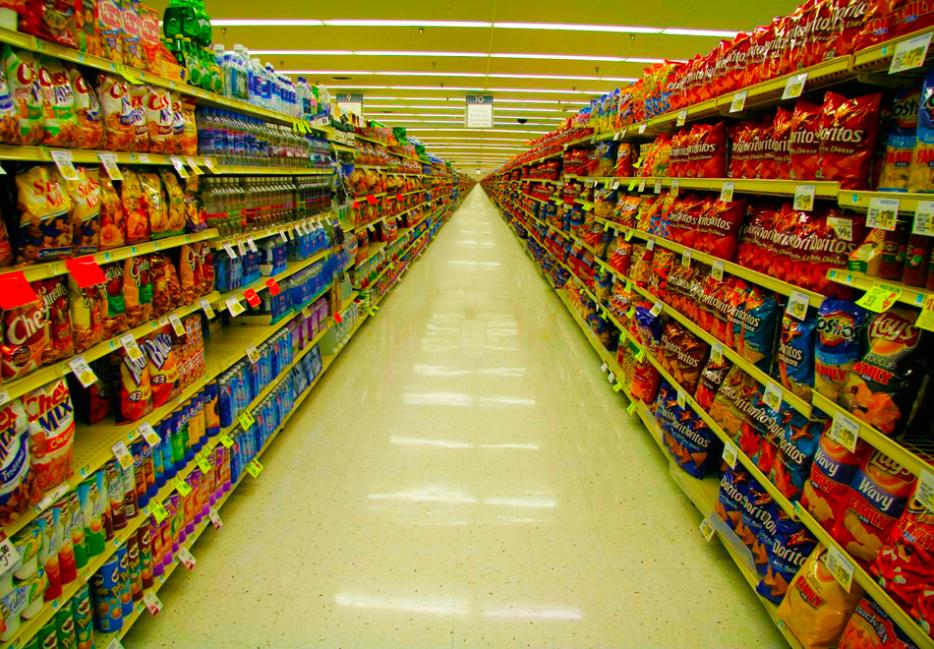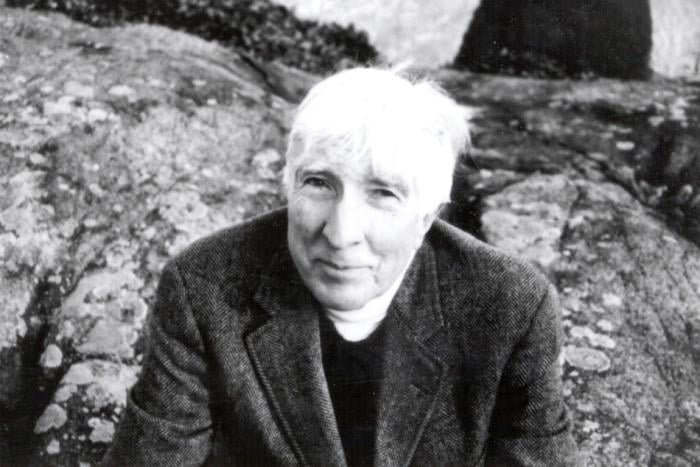It’s a mortifying fact of the body that the business of turning what we eat into the means of sustaining life is, generally speaking, fucking disgusting. And in the last hundred years or so, with the onslaught of factory-processed foods, what we eat has itself slowly become almost as disgusting as the, um, end result. In Salt Sugar Fat, Michael Moss traces the nefarious history of Big Business and small government conspiring to make consumer bliss out of nutritional nightmares.
Bliss, by the way, is the technical term. The “bliss point”—a phrase first used, according to Moss, in the 1970s by a mathematician constructing models to predict our eating behaviours—describes the maximally pleasurable amount of sugar in a given food (or, rather, food product). Children generally have a much higher, sweeter bliss point than adults, which perhaps explains why I can no longer actually enjoy a Slurpee, even in sweltering weather. Alarmingly, there is no simple fixed point of optimal delight for fat—our brains and taste buds clamour for more. Adding sugar only makes fat less detectable, and puts the cherry on top of our gustatory joy.
While Moss sensibly structures his thoroughly reported investigation according to each of the titular flavour-packed ingredients, this particular axis of dietary evil is so thoroughly bonded that the book suffers a bit from repetition. Generally well-written—though not deliciously, by any means—Moss’s prose is a workhorse designed to deliver information. The best and most enlightening elements of Salt Sugar Fat are the miniature profiles of reformed food chemists and marketers, like Robert I-San Lin, the former chief scientist at Frito-Lay.11He’s also the man responsible for opaque potato chip packaging, which prevents light from chemically breaking down each chip’s all-important crunch. At the time—the 1970s and early 1980s—Frito-Lay was a division of PepsiCo, which had a $4 billion market share.22Or, to use a piece of Big Food jargon, “stomach share.” Lin began a prescient internal campaign to get the company to reduce the amount of salt used in its popular snack foods in 1978. They all but laughed him off. In 1979, Lin petitioned the FDA to reclassify salt as a food additive, and regulate it with labels and warnings. Again, he failed; food industry lobbyists composed an ad hoc counter about the necessity of salt in the diet. Salt Sugar Fat does an upstanding job of tracing the unsettling connections between America’s regulating governmental bodies and the producers of high-calorie, nutritionally empty junk foods. The deep pockets of the mega corporations have, to be both cynical and accurate, plenty of space for friends in Washington.
Moss uses the metaphor of addiction persuasively throughout—the book’s subtitle is “How the Food Giants Hooked Us”—but it turns out that real addicts are on Wall Street. Though he describes the win-at-any-cost corporate culture of Coke during the infamous Cola Wars, Moss also shows the real moral ambivalence of many industry insiders. Though he has subsequently retired, John Ruff, the former senior vice president of Kraft, assembled a panel on obesity and nutrition intended to keep the company internally accountable for the significant role the its products play in America’s—and increasingly, the world’s—diet. In 2003 the company attempted to overhaul its practices by installing its own watchdogs. Through employing people like Ellen Wartella, an expert on children’s marketing and advocate for responsible media, Kraft hoped to vastly reduce the impact of its products on what had by then been described as an obesity epidemic.33While the financial interests of junk food companies are obviously explicitly connected to the poor health of their consumers, the phrase “obesity epidemic” seems like a rhetorical gesture aimed to simultaneously blame individuals for their size and/or health and absolve the powers that be from their responsibilities—obesity (rather than hypertension, heart disease, and diabetes) is made in this way to sound like some kind of hopeless plague, as though those afflicted are themselves contagious. Suffice to say I don’t care for the phrase, especially given that weight—even what seems like a lot of it—simply does not provide enough information to assess any individual person’s overall health. But like Lin before him, many of Ruff’s intended improvements proved too financially risky for stakeholders. On the stock market, financial growth remains paramount, regardless of the rising heart disease rates of any given customer.
Though Moss’s original interviews with insiders who’ve seen the errors of their ways are more than worth the price of admission, it’s hardly a surprise that the wealthy snack-food-overseers seldom, if ever, deign to eat their own dangerously delicious products. If you’ve got the money and other socio-cultural resources to eat real food (and as notoriously genteel Michael Pollan would have it, not too much, mostly plants) despite the aggressive, government subsidized agendas of Big Agriculture bolstered by even Bigger Business, why wouldn’t you add a few years to your life while potentially subtracting a few inches from your waistline?
The problem, as Moss empathetically indicates throughout the book, is that most people dependent on detrimental convenience foods are ill-equipped to combat the effects of Big Food’s industriousness. Obesity and diabetes are very much on the upswing in the most marginalized and poorly served communities, not coincidentally where PepsiCo- and Coke-subsidized corner stores are frequently the easiest, if not only, places to stock up on food. While the depth of his reporting dazzles, there are very few delights found between these covers. Information is of course powerful, but unlike the story on Pink Slime that helped win Moss a Pulitzer in 2010, I doubt anything in Salt Sugar Fat will directly affect any truly radical changes on behalf of the industry or the policies that govern it. Nonetheless, it’s through these kinds of even-handed accounts of the perils of modernity that change builds gradually—the hope being that reform comes before our collective arteries are irredeemably clogged.
While the lip-smacking goodness of salt, sugar, and fat44Add a little flour and you’ve got a serviceable recipe for pie dough. is mitigated almost entirely by the depressing health effects of same, thankfully we can still take pleasure in the biological machinery of taste itself. And, thanks to Mary Roach’s joyful spelunking through the plumbing of the human body, we can take almost as much pleasure with all the rest of our eating, digesting, and evacuating apparatus.
Better than a real-life Mrs. Frizzle, Roach gleefully tours the alimentary canal with characteristic panache in Gulp, her latest monosyllabically titled adventure. Structured like a nose-to-tail cookbook without the cooking, Gulp investigates the biological and chemical roots of all the mucousy, acidic, gurgling-burping-farting indignities of the human body. Beginning tastefully with the by now worked-over terrain55Or, as Roach puts it: “Authors have profiled the brain, the heart, the eyes, the skin, the penis and the female geography, even the hair, but never the gut. The pie hole and the feed chute are mine.” of the role of scent in the revelry of taste and memory, Roach is demure, but by the penultimate chapter’s investigation into death by constipation66Most notably, Elvis. It’s common knowledge that the King died on the porcelain throne, but Roach’s investigation into this particular piece of Americana lays to rest the myth that the rock and roll legend was done in by drugs; a defective colon put undue pressure on his bowels and on his heart, the later of which seems to have simply gave out while he was straining the move the former. all taboos have been more or less flushed away. So great is her pleasure in the subject matter, from frankly horrifying 19th century medical experiments to the view of her own colon, that it becomes absolutely infectious. The trivia alone, while not precisely dinner party appropriate, is thrilling, but it’s the finely honed good humour (and the gut-busting puns) that make Roach’s work come almost unbearably alive.77Practically literally, as in the chapter where Roach is guided by scientists in a series of experiments to see how long a worm can live inside the digestion system of a lab rat.
There’s a witty sort of tenderness to Gulp in the way that Roach describes each of the scientists she encounters, even the long-dead ones she knows only through their studies. Consider the incredibly unusual relationship between Dr. William Beaumont and Alexis St. Martin,88Fun fact: St. Martin was French-Canadian, yet another hero of history we can gleefully claim as our own. who met in 1822 and are the subjects of one of Gulp’s most fascinating chapters. St. Martin had a rare injury, a fistula that allowed him to live with the contents of his stomach permanently on display, and Beaumont wanted the chance to become more than “the anonymous rustic toil of an assistant surgeon at a military out post.” The two spent the next 30 years in each other’s painfully intimate99Roach quotes the dubiously ethical doctor: “On applying the tongue to the mucous coat of the stomach, in its empty, unirritated state, no acid taste can be perceived.” Unirritated! company, as Beaumont experimented wildly on the role of the stomach’s acids in digestion. For the most part, it’s the unusualness of this scientist-subject pair that fascinates Roach; she examines paintings and engravings, trying in vain to parse the relationship between these two men. In the end she arrives at the notion that theirs is a story of obsession: “Obsession is a pair of blinders, and Beaumont wore his tightly.” In the end, Beaumont’s book on the subject was met mostly with indifference. How lucky we are that Roach’s own obsessive investigation into digestion1010She warns us: “I have an awareness that I must seem like an unusual person.” yields a much richer result.
Why we eat is obvious, what we eat less so, but whatever the case, the real action is in what happens next. If we are what we eat, then we are also what we shit—and whether you’re loading up on corn chips and Mountain Dew or organic chile con carne and a selection of dew-flecked wild lettuces, it all travels the same time-honoured trail from one end to the other. As you might recall from grade school, Everybody Poops. Nonetheless, even a room full of feces and flatus scientists won’t eat a chocolate-dipped banana modelled on the type 4 of the Bristol stool chart. (Were I there with Roach and her coterie of butt by-product experts, I daresay I just might’ve worked myself up to it, despite the fact that we all initially feast with our eyes.) Close contact with poop is a long-held dietary deal-breaker for people, and for good reasons. Rats and rabbits, and sometimes dogs, all re-serve themselves previously digested dinners to extract the maximum quantity of nutrients—that second helping is more or less just to make sure they get all the good stuff—but in general humans recoil from the idea. But by Gulp’s very last chapter, it becomes clear that in some cases, gently breaking this taboo could vastly improve lives. Fecal transplants (which are precisely what they sound like) are a cheap and relatively painless cure for a painful, intractable affliction caused by the bacteria C. diff. “Rarely does medial science come up with a treatment so effective, inexpensive, and free of side effects”, Roach writes, and yet “no U.S. Insurance company formally recognizes the procedure.” The scientist behind the transplant, Dr. Alexander Khorurts, cites the mere ick-factor of the procedure as one of its impediments to social acceptance: “There is a natural revulsion. It just doesn’t seem right.”
But perhaps, armed with the knowledge of how things work thanks to the tireless work of people like Roach and Moss, it’s possible to change our collective course for the better, whether it means going back to, or against, nature, as the case may be. The ins and outs of the body remain instruments of disgust and delight, and I suppose it’s healthy to occasionally relish our endless capacity for both extremes. It’s best to just do as Roach suggests: “Respect your equipment, people.”






